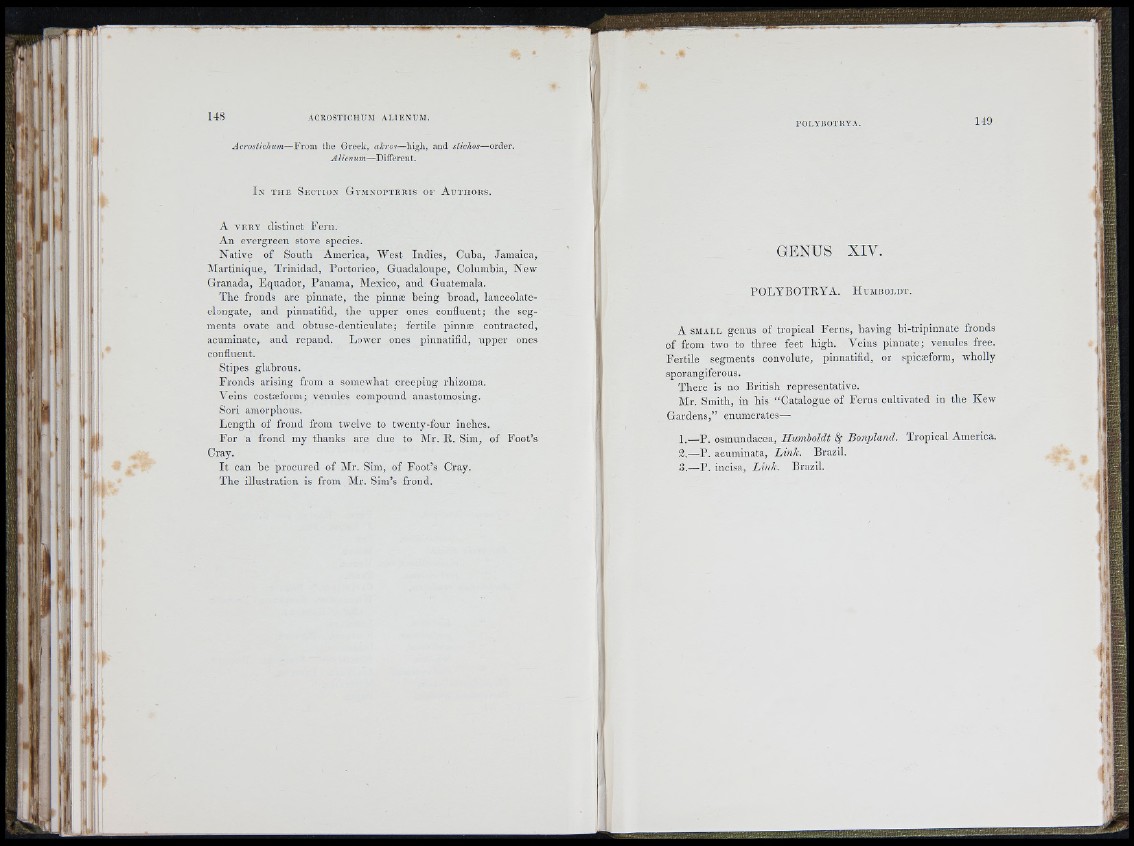
Acrostichum—4’rora the Greek, akros—higji, and siichos—order.
Alienum—Different.
I’OI.YBOTRYA. 149
Ix THE S e c t i o n G y m n o p t e r i s o f A u t h o r s .
A VERY distinct Fern.
An evergreen stove species.
Native of South America, AVest Indies, Cuba, Jamaica,
Alarlinique, T rin id ad , Portorico, Guadaloupe, Columbia, New
Granada, F q u ad o r, Panama, Alexico, and Guatemala.
The fronds are pinnate, the pinnæ being broad, lanceolate-
elongate, and pinnatifid, the u p p e r ones confluent; the segments
ovate and obtuse-denticulate; fertile pinnæ contracted,
acuminate, and repand. Lower ones pinnatifid, u p p e r ones
confluent.
Stipes glabrous.
Fronds arising from a somewhat creeping rhizoma.
A’eins costæform; venules compound anastomosing.
Sori amorphous.
L ength of frond from twelve to twenty-four inches.
F o r a frond my thanks are due to Air. R. Sim, of F o o t’s
Cray.
I t can be procured of Air. Sim, of F o o t’s Cray.
The illustration is from Air. Sim’s frond.
GENUS XIV.
PO LY BO T RY A . H u m b o l d t .
A SMALL genus of tropical F e rn s, having bi-tripinnate fronds
of from two to three feet high. Veins p in n a te ; venules free.
F e rtile segments convolute, pinnatifid, or spicieform, wholly
sporangiferous.
T h e re is no British representative.
Air. Smith, in his “ Catalogue of F erns cultivated in the Kew
Gardens,” enumerates—
1.,—P . osmundacea, Hmnholdt ^ Bonpland. Tropical America.
2.—P . acuminata, Bin/c. Brazil.
3.—P. incisa, Bi/ili. Brazil.